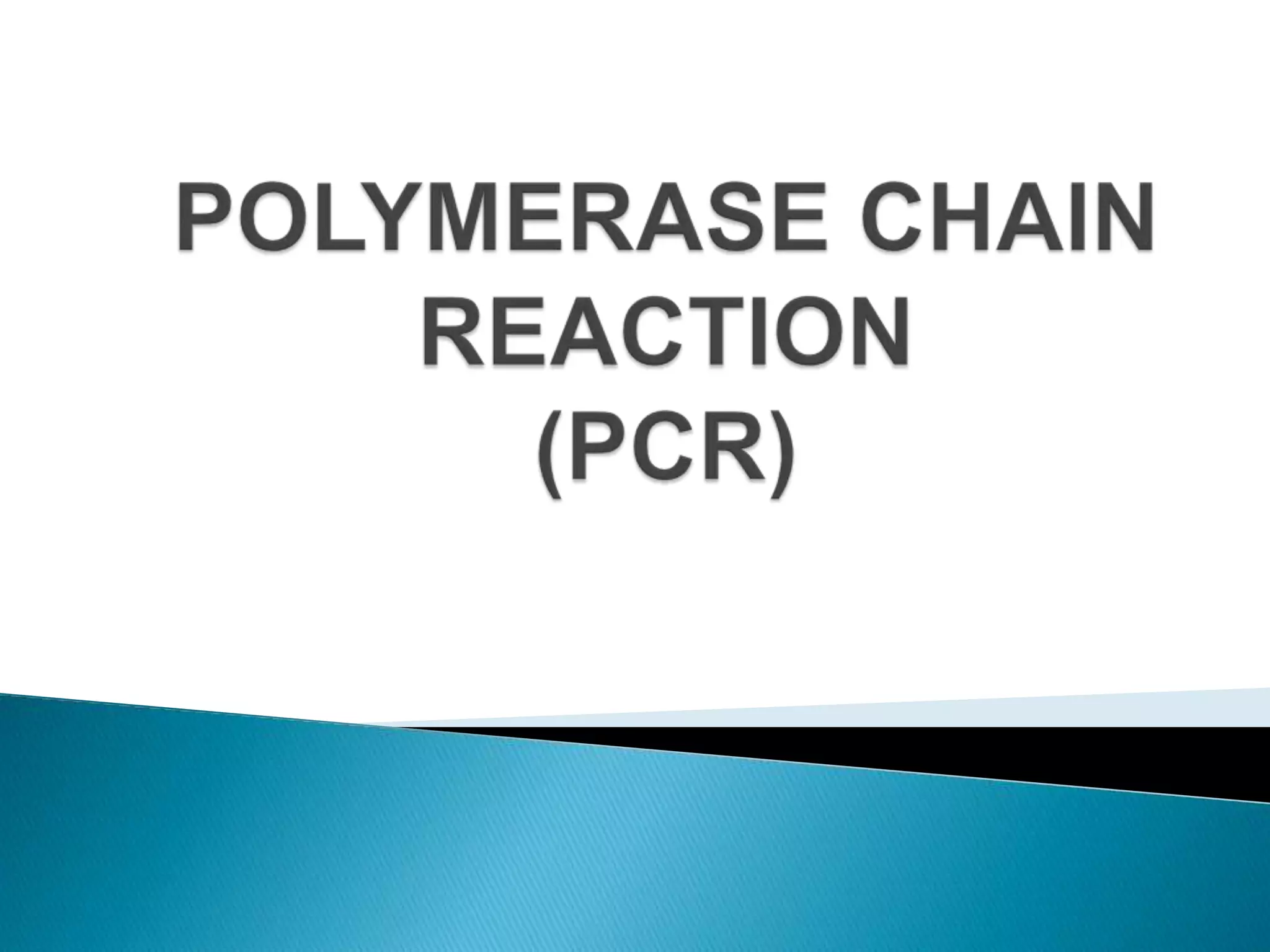DNA amplification techniques include in vivo cloning and in vitro PCR. PCR was independently proposed in the 1970s and 1980s and allows selective amplification of DNA segments using a thermostable DNA polymerase. Key components of PCR include a template DNA, primers, DNA polymerase, nucleotides, and magnesium. During cycling, the DNA is denatured, primers anneal, and the polymerase extends the DNA. PCR has revolutionized molecular biology due to its ability to rapidly amplify specific DNA regions.














![ Wallace rule:
This equation can be used to calculate the Tm of
duplexes 15-20 nucleotides in length in solvents of
high ionic strength (e.g. 1M NaCl).
Tm (in C) = 2 (A+T) +4 (G+C)
Bolton and McCarthy (1962):
The equation predicts the melting temperature of
oligonucleotides 14-70 nucleotides in length in cation
concentrations of 0.4 M or less:
Tm (in C) = 81.5 C + 16.6 (log10 [K+]) +
0.41 (% (G+C) – 675/n)](https://image.slidesharecdn.com/pcr-120401050309-phpapp02/75/POLYMERASE-CHAIN-REACTION-15-2048.jpg)





















